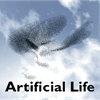Cognitive Distinctions as a Language for Cognitive Science: Comparing Methods of Description in a Model of Referential Communication
IF 1.5
4区 计算机科学
Q4 COMPUTER SCIENCE, ARTIFICIAL INTELLIGENCE
引用次数: 0
Abstract
An analysis of the language we use in scientific practice is critical to developing more rigorous and sound methodologies. This article argues that how certain methods of description are commonly employed in cognitive science risks obscuring important features of an agent’s cognition. We propose to make explicit a method of description whereby the concept of cognitive distinctions is the core principle. A model of referential communication is developed and analyzed as a platform to compare methods of description. We demonstrate that cognitive distinctions, realized in a graph theoretic formalism, better describe the behavior and perspective of a simple model agent than other, less systematic or natural language–dependent methods. We then consider how different descriptions relate to one another in the broader methodological framework of minimally cognitive behavior. Finally, we explore the consequences of, and challenges for, cognitive distinctions as a useful concept and method in the tool kit of cognitive scientists.认知差异作为认知科学的一种语言:指涉交际模型中描述方法的比较。
对我们在科学实践中使用的语言进行分析,对于开发更严格、更合理的方法至关重要。本文认为,认知科学中通常使用的某些描述方法有可能模糊代理认知的重要特征。我们建议明确一种描述方法,以认知差异的概念为核心原则。在此基础上,建立并分析了一个参照交际模型,作为比较描述方法的平台。我们证明,在图论形式主义中实现的认知区别,比其他不太系统或自然语言依赖的方法更好地描述了简单模型代理的行为和观点。然后,我们考虑在最小认知行为的更广泛的方法框架中,不同的描述如何相互关联。最后,我们探讨了认知差异作为认知科学家工具箱中有用的概念和方法的后果和挑战。
本文章由计算机程序翻译,如有差异,请以英文原文为准。
求助全文
约1分钟内获得全文
求助全文
来源期刊

Artificial Life
工程技术-计算机:理论方法
CiteScore
4.70
自引率
7.70%
发文量
38
审稿时长
>12 weeks
期刊介绍:
Artificial Life, launched in the fall of 1993, has become the unifying forum for the exchange of scientific information on the study of artificial systems that exhibit the behavioral characteristics of natural living systems, through the synthesis or simulation using computational (software), robotic (hardware), and/or physicochemical (wetware) means. Each issue features cutting-edge research on artificial life that advances the state-of-the-art of our knowledge about various aspects of living systems such as:
Artificial chemistry and the origins of life
Self-assembly, growth, and development
Self-replication and self-repair
Systems and synthetic biology
Perception, cognition, and behavior
Embodiment and enactivism
Collective behaviors of swarms
Evolutionary and ecological dynamics
Open-endedness and creativity
Social organization and cultural evolution
Societal and technological implications
Philosophy and aesthetics
Applications to biology, medicine, business, education, or entertainment.
 求助内容:
求助内容: 应助结果提醒方式:
应助结果提醒方式:


